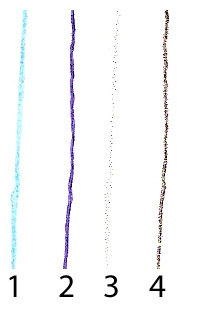| Non-photo blue | |
|---|---|
| | |
| Hex triplet | #A4DDED |
| sRGB B (r, g, b) | (164, 221, 237) |
| HSV (h, s, v) | (193°, 31%, 93%) |
| CIELChuv (L, C, h) | (85, 34, 214°) |
| Source | [Unsourced] |
| ISCC–NBS descriptor | Very light greenish blue |
| B: Normalized to [0–255] (byte) | |

Non-photo blue (or non-repro blue) is a common tool in the graphic design and print industry, [1] [2] being a particular shade of blue that cannot be detected by graphic arts camera film. This allows layout editors to write notes to the printer on the print flat (the image that is to be photographed and sent to print) which will not show in the final form. It also allows artists to lay down sketch lines without the need to erase after inking.